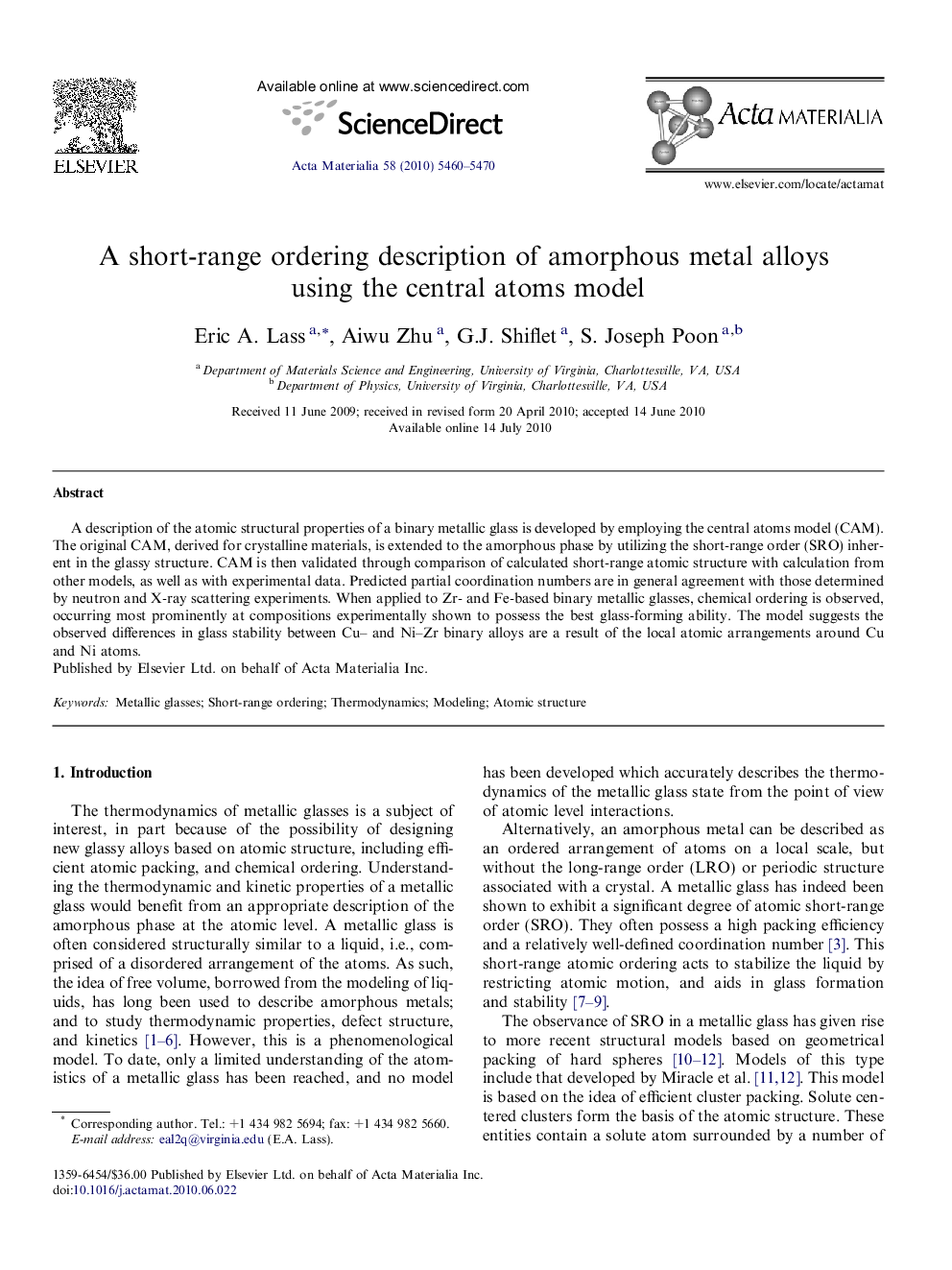| Article ID | Journal | Published Year | Pages | File Type |
|---|---|---|---|---|
| 1448170 | Acta Materialia | 2010 | 11 Pages |
A description of the atomic structural properties of a binary metallic glass is developed by employing the central atoms model (CAM). The original CAM, derived for crystalline materials, is extended to the amorphous phase by utilizing the short-range order (SRO) inherent in the glassy structure. CAM is then validated through comparison of calculated short-range atomic structure with calculation from other models, as well as with experimental data. Predicted partial coordination numbers are in general agreement with those determined by neutron and X-ray scattering experiments. When applied to Zr- and Fe-based binary metallic glasses, chemical ordering is observed, occurring most prominently at compositions experimentally shown to possess the best glass-forming ability. The model suggests the observed differences in glass stability between Cu– and Ni–Zr binary alloys are a result of the local atomic arrangements around Cu and Ni atoms.
